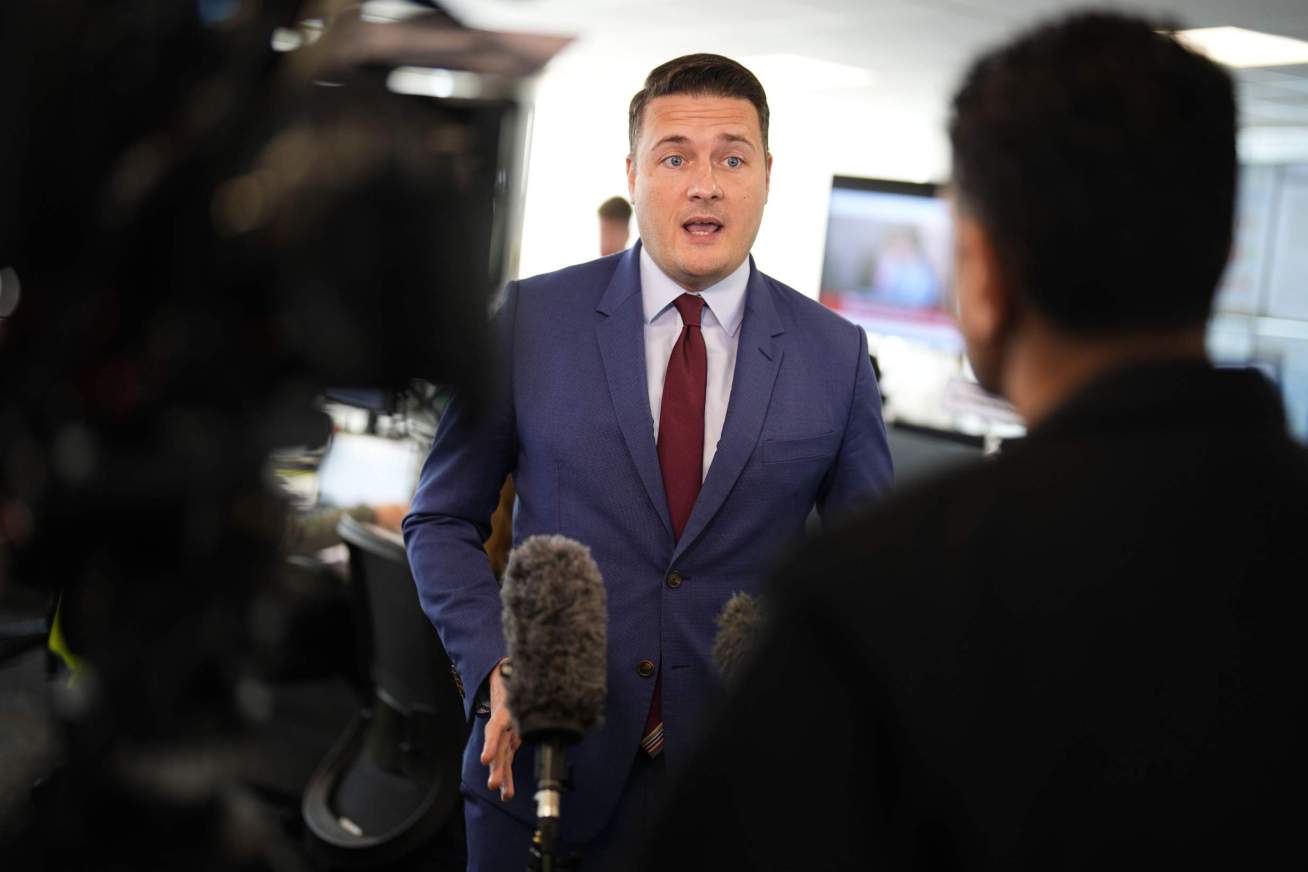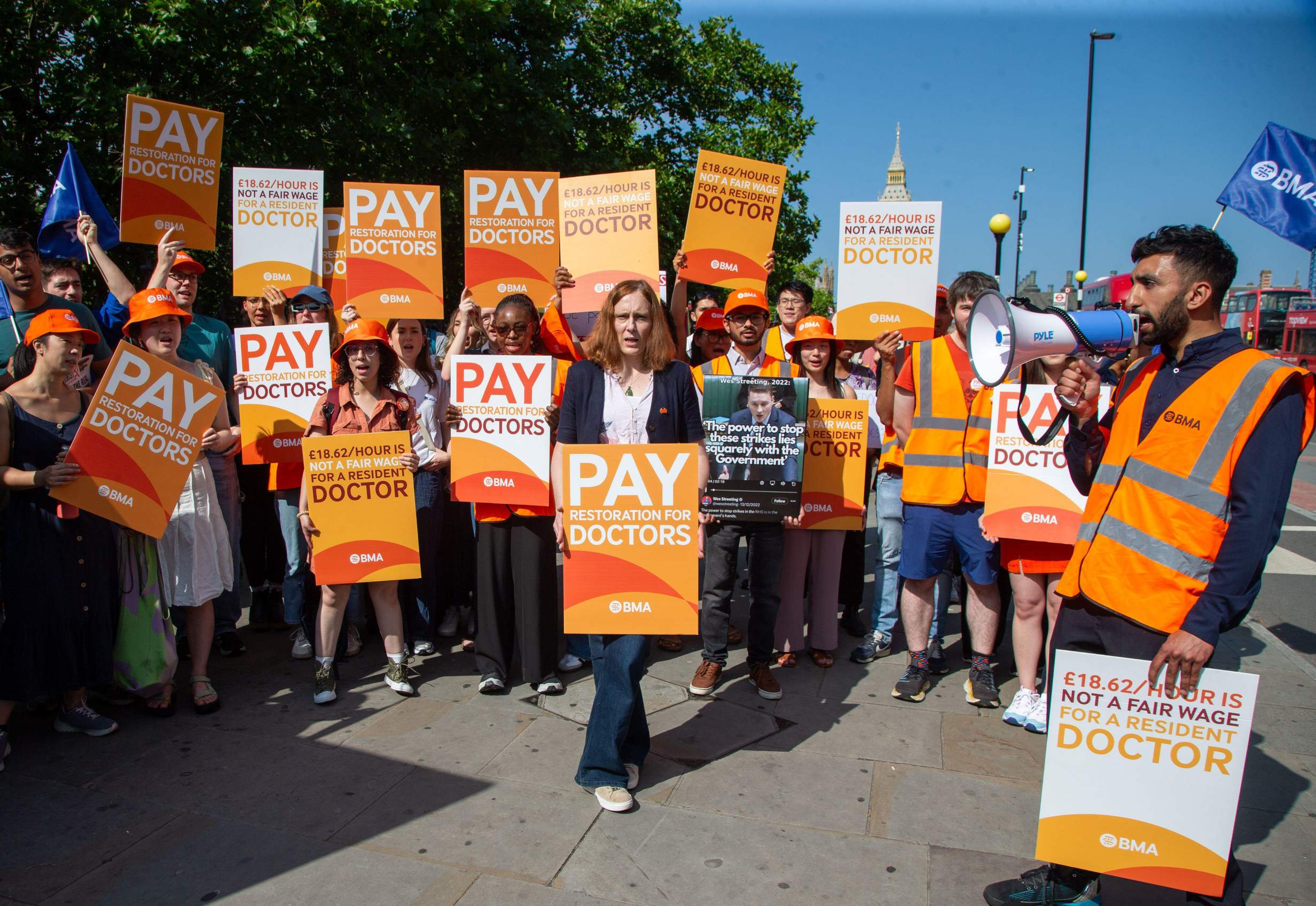
Read our Digital & Print Editions
And support our mission to provide fearless stories about and outside the media system
While Britain initially put up a united front, clapping for the NHS during the pandemic and continuing to show support as pressures on the healthcare system persisted, public solidarity was abruptly withdrawn when the British Medical Association (BMA) announced its latest plans for doctors’ strikes.
Following a 90% vote in favour of industrial action, on a 55% turnout, the BMA announced a five-day walkout that led to a public outcry.
Health Secretary, Wes Streeting, accused the BMA of “holding the country to ransom”, arguing that the strikes would “throttle” NHS progress on waiting lists, which recently hit a two-year low – the first April drop since 2008 (excluding the first year of the pandemic).

Members of the public I’ve personally interacted with angrily questioned why the BMA had accepted a 22% pay rise awarded between 2023-2024, only to strike again. They also pointed to the fact that resident doctors are set to receive an additional 5.4% pay award in August 2025, comprising a 4% uplift and a consolidated £750 payment, backdated to April 2025.
The issue has even created a generational rift among doctors. From retired GPs on my LinkedIn feed announcing their resignation from the BMA, frustrated that resident doctors are unwilling to endure the “paltry” pay they once did, to consultants labelling the strikes as “unrealistic and unreasonable”, the backlash reveals just how divided medical staff have become.
The most notable BMA resignation came from Professor Lord Robert Winston, an IVF pioneering doctor and household name thanks to his popular BBC documentaries. Winston announced the end of his 60-year membership in an interview with The Times in July, branding the strikes as “highly dangerous”.
The sentiment behind this disapproval is sound: they’re worried about patient safety, which rightly should always be the top priority. In the short term, strikes seem counterintuitive, but in the long term, they serve the very system critics are trying to protect.
Supporting doctors now means building a stronger, safer NHS in the future and eradicating preventable tragedies, like those seen in the high-profile Dr Bawa-Garba case, that happened due to unfair and unsafe pressures on health care staff.
Even Streeting admitted that this time, strike disruption – which ended Wednesday – “was not that bad” thanks to the “heroic efforts of frontline staff”. More operations and procedures were protected than in previous years, and A&E response times improved during the period of industrial action.
Why Resident Doctors Want More – When They Just Got More
But despite efforts to minimise disruptions, the underlying question remains: if resident doctors have already received the highest pay increase across the public sector for the second year in a row, why isn’t it enough?
According to the latest analysis by the BMA, doctors have suffered a pay erosion of 21% in real terms since 2008, which means that resident doctors – previously known as junior doctors – are still working more than a fifth of their time for free.
While a 29% pay-rise figure has been widely circulated, the most up-to-date figures published by the BMA show that a slightly less pay uplift of 26% is needed to restore pay to 2008 levels in 2025/6.
Streeting has pushed back on this, asserting that doctors have already received a pay rise of 28.9% over the last three years. However, Dr Emma Runswick, deputy chair of the BMA, told the BBC that this figure only amounts to an 8% increase in real terms when taking inflation into account.
The reasoning behind the strikes, according to BMA chair Dr Tom Dolphin, is the fact that the 22% uplift was meant to be the first step in a longer journey toward full pay restoration, but with the Government slowing down progress, doctors have been left with no choice but to strike.
Though entrusted with arguably the most selfless duty of all, saving lives, doctors are being labelled as “entitled”, “unconscionable” and “reckless”.
Are Doctors Really Being Shortchanged? Here’s The Math
But the reality is that doctors and medical students have been shortchanged for years, and it’s only been getting worse.
While we might be seen as brats for refusing to endure the supposed hardships our forebears faced – often treated as a twisted rite of passage – the fact is, that’s simply not true.
Medics today have it much harder than their predecessors. Before I’m accused of being a snowflake and chastised for not learning the value of grit, I must say that I chose this pathway of my own volition and I truly love it. And that’s exactly why I want to see it improve, not regress.
The Winston’s of the medical world enjoyed free tuition for starters. Today, students are expected to pay £9,535 a year for that, not to mention rising living costs and inflation, which even maximum maintenance loans don’t cover.
With medical degrees in the UK taking five to six years to complete, the average foundation doctor graduates with a debt of £100,000 at an interest rate of 7%. If little progress is made with repayments, that figure can double in 10 years, thanks to compound interest.
Newly-qualified foundation doctors used to be entitled to free hospital accommodation during those early days of training, which allowed them to make massive savings on housing costs. The Government scrapped the scheme in 2008.
But it’s not just accommodation that’s undergone drastic changes over the years; the housing ladder has also been pulled from under my generation too.
In the 1990s, average UK house prices hovered around £50,000. In 1990, for instance, the average home cost £53,578, which is equivalent to £132,774 today. Back then, that meant the average house cost just four times the average salary.
Today the average house costs £268,652 which is around seven-eight times higher than the average UK salary.
Earlier this week, the BMA revealed that 52% of FY2 doctors they surveyed had “no substantive employment” or locum work from August 2025 which is when the new roles begin.
On one side we have a healthcare system that is crying out for doctors. On the other, resident doctors are ready to see the years of their hard work and sacrifice come into fruition, only to be left unemployed.
The situation is so dire that, as the British Medical Journal revealed Thursday, some doctors are living on Job Seeker’s allowance or being forced to move to New Zealand in what was described as a “push”, rather than a “pull” situation. Others have turned to taxi driving to make ends meet.
An Expanding Workforce – But A Shrinking Job Market
This crisis stems from a training bottleneck: there simply aren’t enough specialty training posts to match the number of doctors qualifying. The Government has already started increasing the number of medical school places in England as part of its long term NHS workforce plan which aims to double places to 15,000 a year by 2031.
While the commitment to expand the workforce is commendable, the execution has been short-sighted.
After completing Foundation Year 2, doctors can either enter GP training or begin the long road to becoming a consultant which can take anywhere between eight to ten years.
But now the chance to get a training position, even in General Practice which was once considered safe, has become near impossible with thousands of doctors competing for just a handful of spaces.
And for those doctors fortunate enough to win the lottery of securing a spot, the challenges are far from over. The preference-informed random allocation system means that doctors can be placed anywhere in the country. Often far away from all their friends, family and support networks, with little to no say over the situation and as little as three weeks’ notice.
Many are required to relocate every six months as part of their rotational training programme, enduring the instability that comes with constant moving.
Along with the stress of moving around, the costs also raise concerns for many. According to research from UCL, surgical trainees may spend as much as £70,000, of their own money, to meet all the mandatory qualification requirements.
The bills, however, start piling up from the very beginning. Stethoscopes, labcoats, goggles, enhanced DBS checks, and transport to distant hospital placements during clinical years, are all expenses that medical students are expected to cover.
The BMA holds a legal mandate that allows strikes to carry on until January 2026. In his latest piece for The Guardian, Streeting switched tactics, warning doctors they’d “lose” if they went to “war” with the Government. But it shouldn’t have to come to that.
ENJOYING THIS ARTICLE? HELP US TO PRODUCE MORE
Receive the monthly Byline Times newspaper and help to support fearless, independent journalism that breaks stories, shapes the agenda and holds power to account.
We’re not funded by a billionaire oligarch or an offshore hedge-fund. We rely on our readers to fund our journalism. If you like what we do, please subscribe.
Though the strikes have ended and talks between Streeting and the BMA are set to resume, the Health Secretary has already set the tone, blaming the union for having “squandered goodwill” ahead of the meeting.
Streeting has said he’s not prepared to negotiate on pay but wants to restart talks around working conditions, including career progression, rotas and exam fees.
That focus is necessary and should take priority for now. After all, doctors need jobs before they can worry about pay.
But it’s important not to lose sight of the bigger picture. These critical issues are only being addressed because the strikes forced them into the spotlight, when in reality, they should have been resolved long ago.
And when it comes to pay, doctors aren’t asking for the world. Currently, resident doctors are earning less than their assistants, and restoring wages to 2008 levels would mean just £4 extra an hour.
